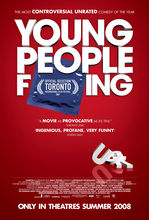By Brian Love
PARIS (Reuters) - The credit crunch is not nearly as severe as the U.S. authorities appear to believe and public data actually suggest world credit markets are functioning remarkably well, a report released on Thursday says.
As a result, governments are pumping masses of public money into the economy across the world because of the difficulties of a few big, vocal banks and industries such as car manufacturing, which would be in difficulty anyway, according to the report published by Celent, a financial services consultancy.
"It's just stabbing in the dark with trillions of dollars," Octavio Marenzi, report author and head of Celent, told Reuters in a telephone interview where he questioned the depth of the analysis that preceded numerous fiscal stimulus packages.
The report, much of which is based on U.S. Federal Reserve data, challenges a long list of assumptions one by one, arguing that there is indeed a financial crisis but that, on aggregate, the problems of a few are by no means those of the many when it comes to obtaining credit.
"It is startling that many of (Federal Reserve) Chairman (Ben) Bernanke and (Treasury) Secretary (Henry) Paulson's remarks are not supported or are flatly contradicted by the data provided by the very organizations they lead," said the report.
Perhaps the U.S. central bank and treasury department, and authorities in other countries by extension, know something they are not telling anyone and which is far more worrying than the public data shows, the report says.
Or, more plausibly, they were generalizing erroneously from the bad experience of a limited number of big banks and companies that are in any case in difficulty.
"I don't think they're fabricating stuff but what I think they are doing is taking the situation of a handful of institutions and generalizing that to the market as a whole, incorrectly," said Marenzi.
The picture appeared to be broadly similar in much of Europe and Japan, said the report, based on publicly available data on trends in bank lending to industry, households and among banks themselves in the so-called interbank markets.
ALL A MYTH?
Regarding U.S. business access to credit, the report says:
*Overall U.S. bank lending is at its highest level ever and has grown during the current financial crisies.
*U.S. commercial bank lending is at record highs and growing particularly fast since May 2007.
*Corporate bond issuance has declined but increased commercial lending has compensated for this.
As for the interbank market, it says:
*lending hit its highest level ever in September 2008 and remained high in October and that overall interbank lending is up 22 percent since the start of the financial crisis, taken to be mid-2007.
*The cost of interbank lending, as measured by the interest rates banks charge each other for lending overnight Fed funds, dropped to its lowest level ever in early November and remains at very low levels.
Marenzi said one of the other measures used by many to gauge interbank lending -- the LIBOR rate -- was a flawed gauge since it was based on daily observations of eight banks, many of which were banks with particularly severe difficulties of their own.
The report argues similarly on consumer credit, which it said was at a record high in September, the latest date for publicly available data.
Local government bond issuance had continued at similar levels to those before the credit crisis, while bank lending for real estate reached a record level in October 2008, it says.
In Europe, the study says there is no evidence of a credit crisis in consumer and commercial lending data up to the end of October, with consumer lending in France and Italy still keeping to trends seen since early 2003 and Germany flatter but for many years and not any more so in recent times.
Bank lending in Britain, tracked from 1999 to October 2008, was at its highest level ever and continued uninterrupted through the credit crisis, the report says.
In Japan, banks began to increase lending activity in late 2005 after a long decline and there has been no sign of a precipitous decline through to October 2008, it said. "Indeed, no decline is visible at all since the credit crisis began."
All of which drove the Celent report to conclude that the U.S. and other governments may be throwing good money after bad for want of a better idea of what is really happening.
"Just like a doctor contemplating an obviously sick and suffering patient, a massive surgical intervention based on a misdiagnosis can only worsen the patient's condition."
- Login per inviare commenti
- Versione stampabile
- Send by email

![[Most Recent Quotes from www.kitco.com]](http://www.kitconet.com/charts/metals/gold/t24_au_en_euoz_2.gif)
![[Most Recent Quotes from www.kitco.com]](http://www.kitconet.com/charts/metals/silver/t24_ag_en_euoz_2.gif)
![[Most Recent Exchange Rate from www.kitco.com]](http://www.weblinks247.com/exrate/exr24_eu_en_2.gif)






Commenti recenti
3 settimane 6 giorni fa
5 settimane 3 giorni fa
7 settimane 19 ore fa
7 settimane 1 giorno fa
16 settimane 15 ore fa
20 settimane 4 giorni fa
23 settimane 5 giorni fa
33 settimane 2 giorni fa
34 settimane 6 giorni fa
35 settimane 4 giorni fa